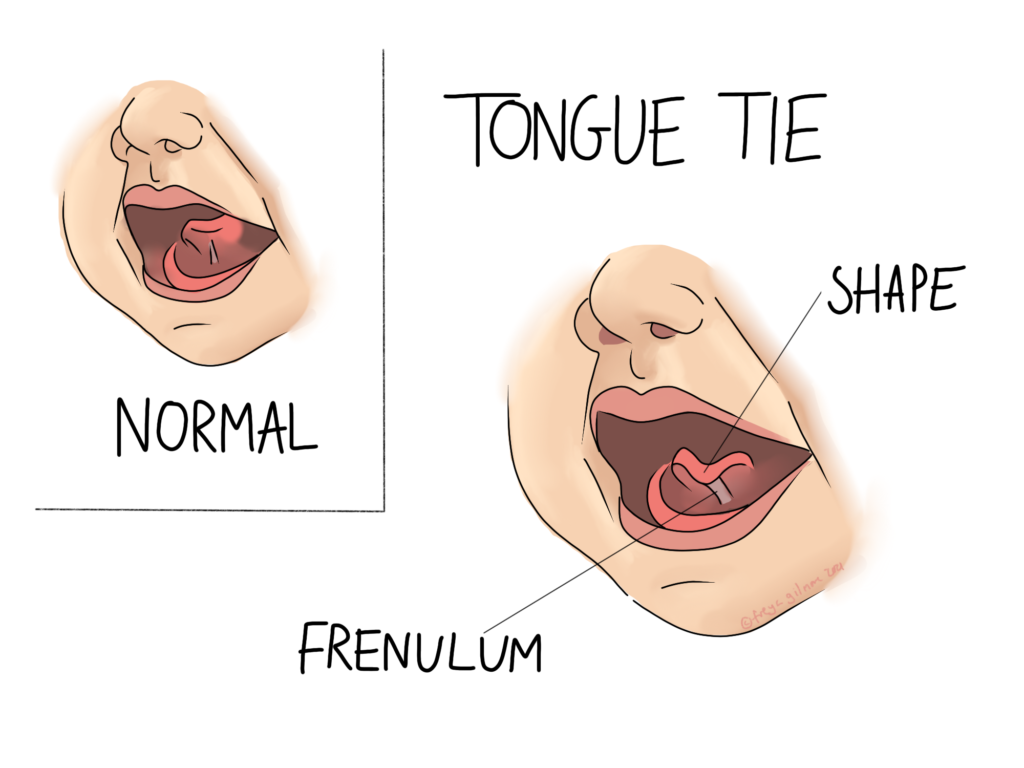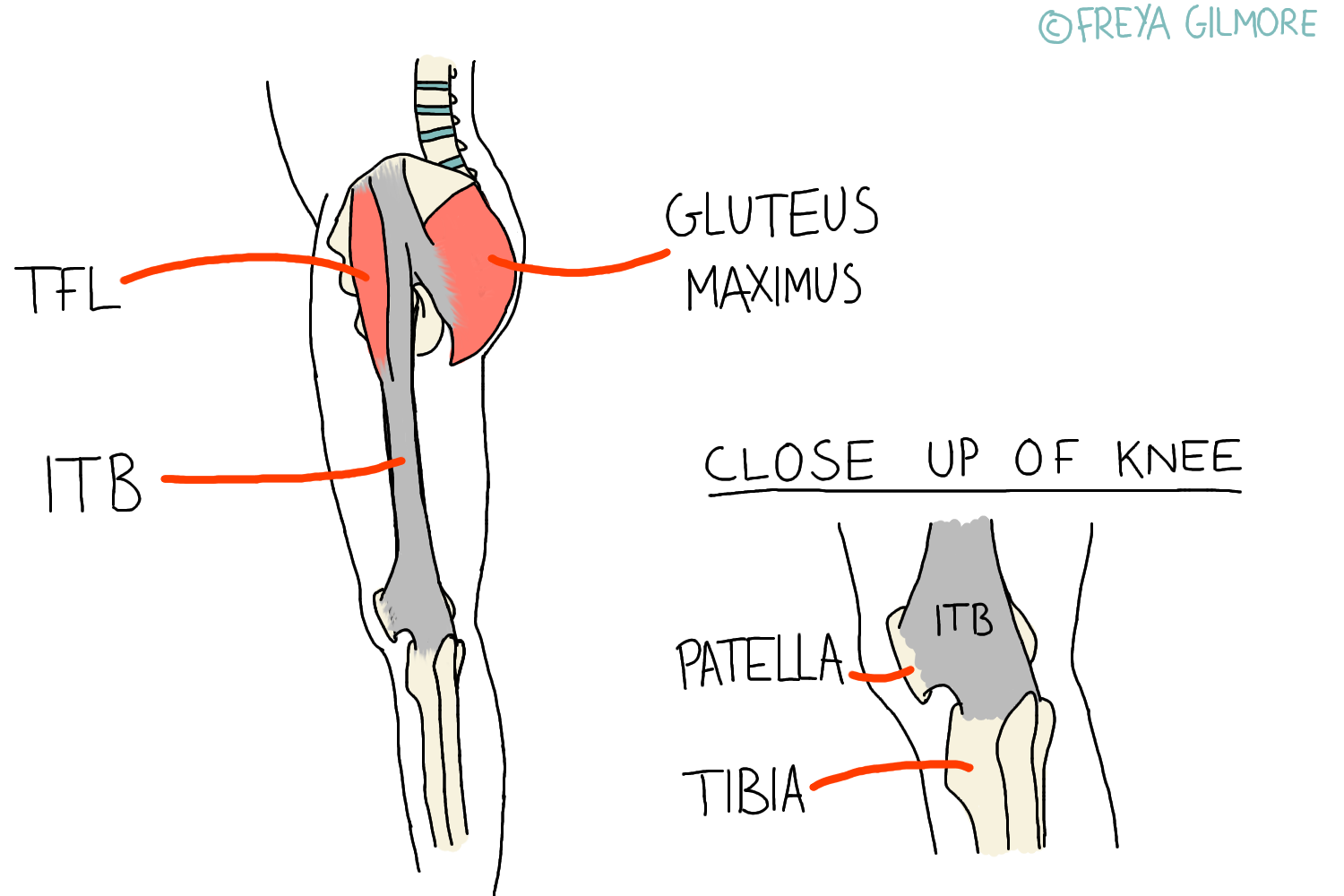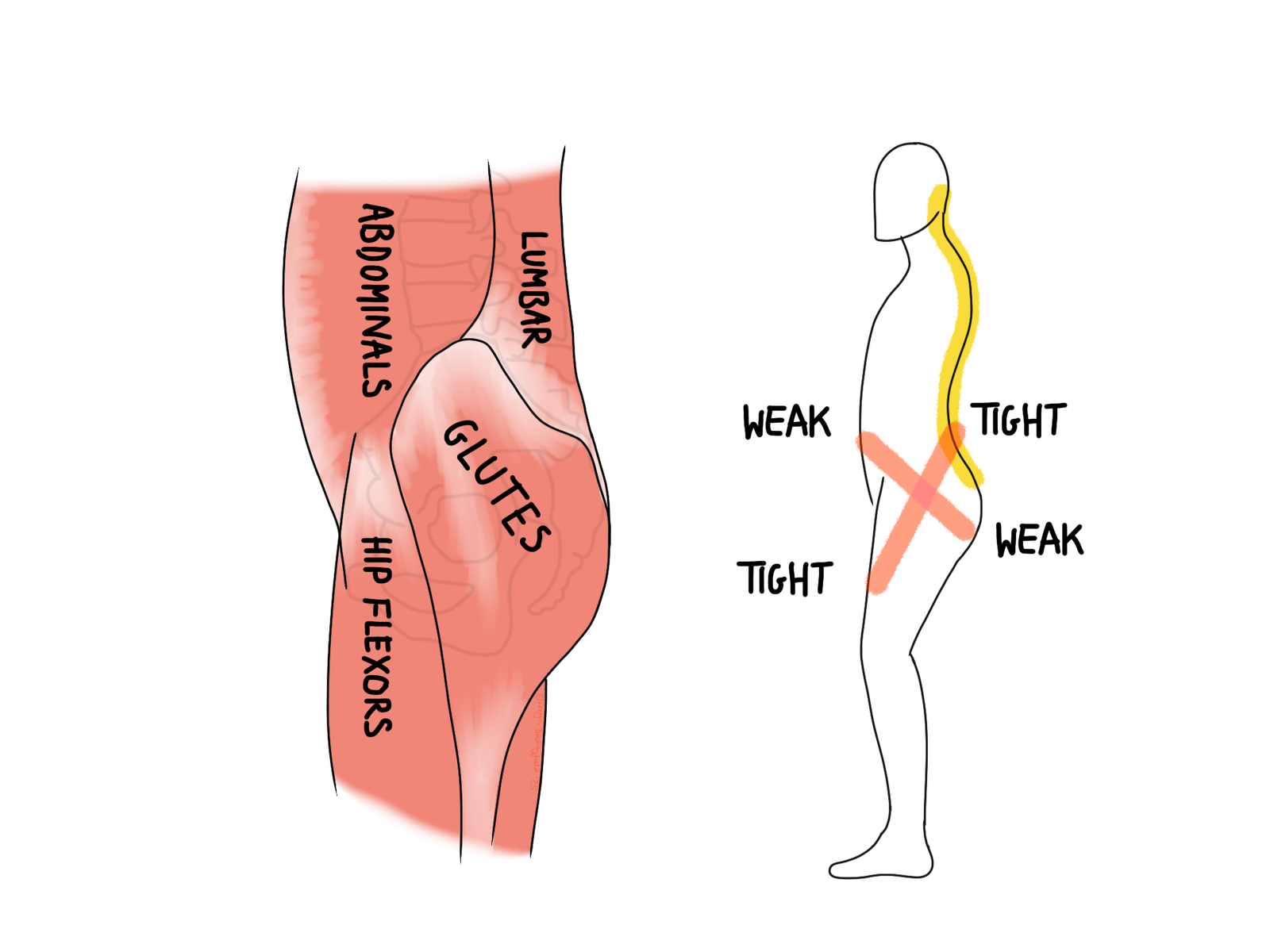The IT band is a band of tissue that runs down the side of the…

Tongue Tie
More than just a figure of speech, tongue tie can affect a baby’s ability to breastfeed. This in turn can lead to an unsettled baby who struggles to gain weight, and an uncomfortable mum who might feel she has to cut the feeding journey short. Once tongue tie is diagnosed, there are solutions.
Diagnosis
Tongue tie (or ankyloglossia) falls on a spectrum, so more mild cases might not be noticed at birth. If the “tie” sits further forward on the tongue, or is particularly restricted, it may be obvious when baby cries. Their tongue will not reach as far as expected, and the tension in the centre can pull the tongue into a heart shape (illustrated).
Less visible cases may be picked up due to their associated symptoms rather than what’s visible. If the baby can’t get a good latch while breastfeeding, they might:
- feed noisily, taking on air as their seal with the breast is inadequate
- cause pain and nipple damage to the mother
- struggle to gain weight
- be “colicky” or unsettled due to hunger and the swallowed air
Some babies with a tie might also have some difficulty bottle feeding, but this might be more subtle.
If you do wish to continue breastfeeding, early intervention is key. Beyond the discomfort to both parties, milk supply is primarily dictated by the amount of milk removed. So if your baby can’t withdraw as much milk as they need, your supply will not match their requirement. Of course, you also want to limit nipple damage and pain for yourself.
Managing Tongue Tie
The NHS recognises tongue tie division surgery as an option for treatment. It also acknowledges that in some cases, treatment may not be necessary at all. But what about the middle ground? The tie itself is a shortening (and sometimes broadening) of the frenulum- the stringy tissue that connects the underside of the tongue to the floor of the mouth. It’s not a muscle, but it is soft tissue, and it may respond to some manual stretching. An osteopath can gently use a gloved finger in your baby’s mouth in an attempt to encourage the frenulum to lengthen.
More holistically, we osteopath can also support the development of normal function after a tongue tie division. Your baby may now be opening their mouth wide and moving their tongue properly for the first time ever, so all associated muscles and joints need to be able to function to allow this. The smaller muscles around the jaw and face have a close relationship with those in the neck, so ensuring everything works well together is good news for a broad area of your baby’s body. We’ve written about torticolis and plagiocephaly on the blog before; these are two conditions that can be heavily influenced by a baby’s neck mobility.
To summarise, your osteopath will take a holistic look at your child, understanding the wider reaching effects a tongue tie can have on the body. Using gentle techniques, we can encourage better mobility for improved comfort and function.
Click here to make an appointment for your baby in Camberley




